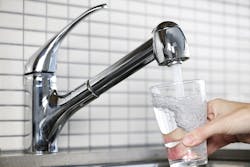Decision-makers at all levels should ensure that the unprecedented new federal and state funding for water infrastructure should be spent in a way that expand access to clean water, according to a new report from the National Wildlife Federation’s Great Lakes Regional Center and the Healing Our Waters-Great Lakes Coalition. The report, based on feedback from policy experts and frontline leaders at a series of roundtable discussions, highlights the rural and urban water issues surrounding accessible, safe, drinking water access in the Great Lakes region.
“We heard loud and clear that this once-in-a-generation investment in water infrastructure needs to be boldly yet carefully utilized to address the unfortunate fact that too many people in the Great Lakes region lack access to clean, affordable water,” said Mike Shriberg, Great Lakes regional executive director for the National Wildlife Federation.
The report includes proposed recommendations for advocates and water utilities as well as federal, state and local decision-makers.
“We collectively learned that while funding is important, money alone cannot solve our water affordability and access problems since the obstacles to clean water are systemic and deep,” stated Monica Lewis Patrick, president and CEO of We The People of Detroit and one of the participants in the roundtables. “We are working to overcome these barriers through collaboration, relentless advocacy, and holding our decision-makers accountable.”
The full report, Drinking Water Infrastructure and Equity Roundtable Report, can be found here. Some key findings include:
- Investment disparities and issues of poor governance in marginalized communities prevent adequate access to clean drinking water systems;
- Multiple barriers will need to be overcome to ensure funds are adequately invested in low-income rural and urban communities, including barriers to identifying needed improvements as well as implementing those improvements;
- There is a strong need to prioritize education and engagement in the communities most in need, including those who may not know they have contaminated drinking water; and,
- Community leaders have a strong desire to tie water infrastructure investment to advance equitable workforce development and the creation of employment opportunities.
As federal infrastructure and other investments are implemented, the National Wildlife Federation, Healing Our Waters-Great Lakes Coalition, and the organizations and advocates that joined the roundtables expressed the need to continue to work together to ensure dollars are allocated to communities in an equitable manner.


